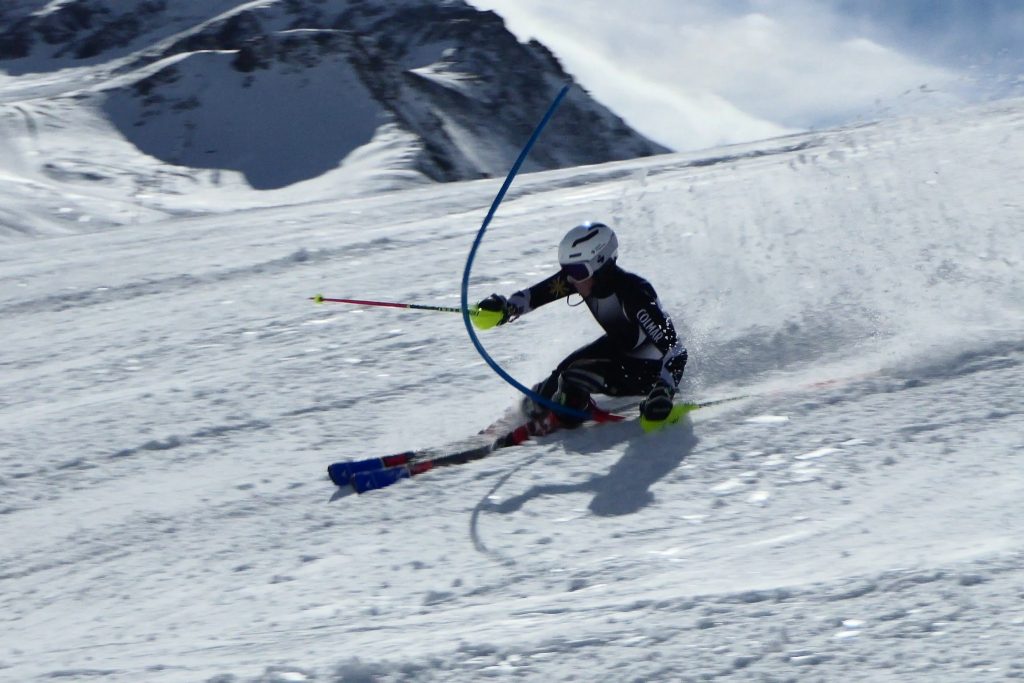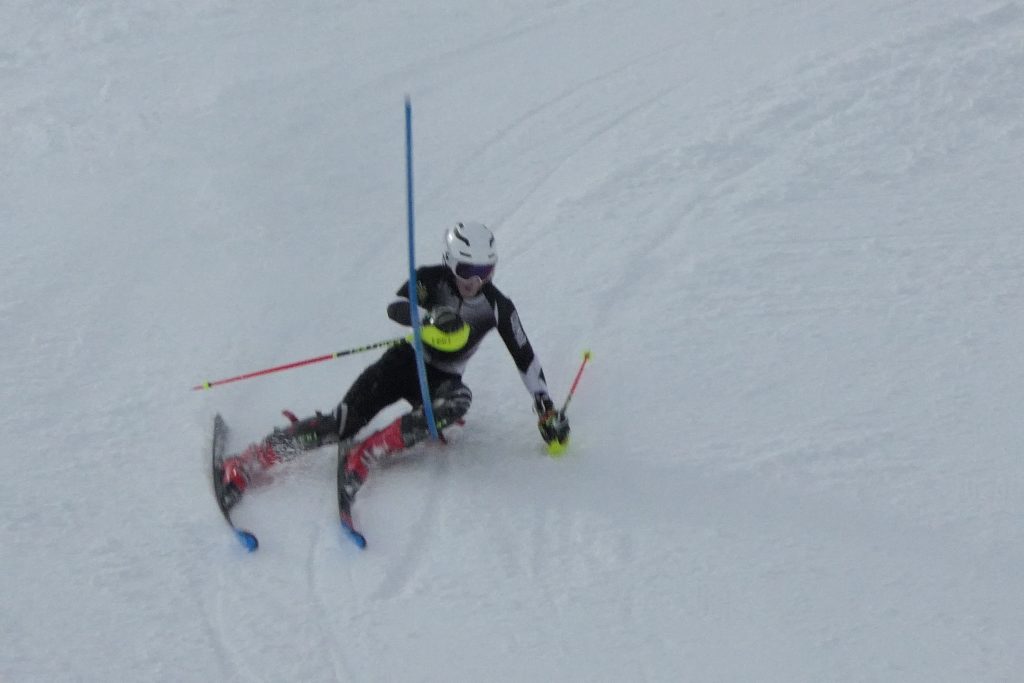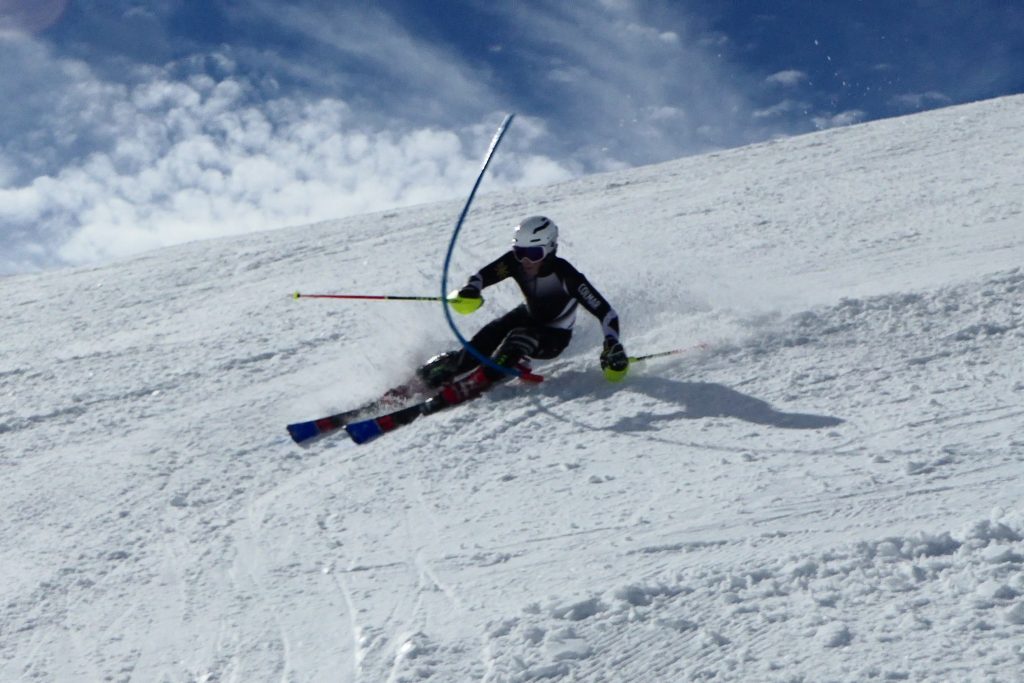Equipment
Always be on top of your equipment eg: If your shin guards are causing you to crash out deal with it immediately – not at some nebulous time in the imaginary future. Any one crash can also be your last crash.
Stivot
Still apparently some excess stivoting to overcome – though tests might need to be done at this level to see if carving was actually faster for entering into the new turn than the stivot. Seems to happen mostly when entering a turn to the right after getting a bit in the back seat from the previous turn to the left – making it more difficult to pressurise the front of the ski.
Dynamics
Be careful not to just push/ fall laterally into the turn – always come forward enough to not be surprised and caught out by steep sections. You can judge this from experience via the physical feedback from the skis and whether or not you feel the fronts working to turn you.
Posture and Stance
Being forward has positively altered the whole stance including the lumbar spine – which when not forward enough always seemed to go concave. Getting the pressure right and making use of the whole ski has eliminated the postural issues.
Note: We found out today that Dynastar slalom skis are hard in the front and soft in the tail – which was how they were before carving skis were invented. It’s years since I heard this being discussed as many trainers insist that you only have to be in the centre of a short carving ski. However it’s perfectly clear that for true high performance skiing differentiation between forward, centre and tail pressure is necessary.
Mike working on early pressure (outside edge of the uphill ski), dynamics and control of rotation – with very good results. The hands are held “out of the way” to stop them from misbehaving and causing rotation – but they need to be held up about the height of carrying a wide tray – and unlike in slalom they don’t move much – only generally a small movement from the wrist to facilitate pole use – from the wrist.








